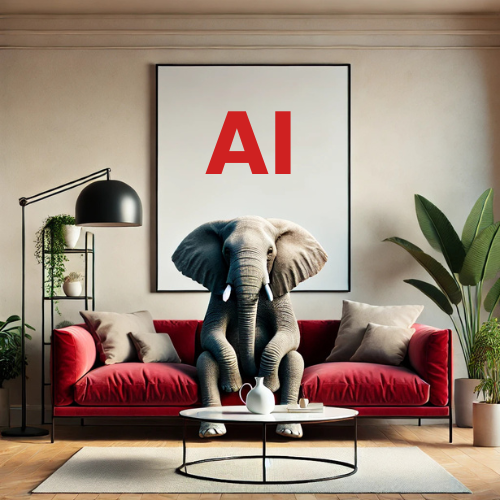The Silent Polluter in the Room
Artificial Intelligence (AI) is often celebrated as a game-changer in sustainability, a powerful tool for optimising energy consumption, reducing waste, and tackling climate change. But beneath its promising exterior, AI has a dirty secret, one that is rarely discussed and yet has profound consequences for our planet.
AI models, particularly large-scale ones, are quietly consuming massive amounts of energy. The environmental cost of training and deploying AI systems is soaring, creating a sustainability paradox. The very technology meant to save the planet is accelerating its destruction. This article delves deep into the hidden carbon footprint of AI, why it matters, and what businesses must do to align AI with genuine sustainability goals.
AI’s Growing Energy Hunger: A Reality Check
Most discussions around AI focus on its benefits, such as automation, efficiency, and innovation. But few acknowledge that training a single advanced AI model can generate as much carbon dioxide as five gasoline-powered cars over their entire lifetime. OpenAI’s GPT-3, for example, required an estimated 1,287 megawatt-hours of electricity during training, emitting over 550 metric tons of CO₂. That is equivalent to the emissions of 120 gasoline cars driven for a year.
This issue becomes even more alarming when we consider the exponential increase in AI adoption. With businesses and governments rushing to integrate AI into everything from customer service to supply chain management, the demand for compute power is skyrocketing. Data centres, the backbone of AI, now account for nearly one percent of global electricity consumption, with projections showing this could reach eight percent by 2030 (IEA report).
The Unseen Water Footprint of AI
Beyond carbon emissions, AI also has a hidden water footprint. Training AI models requires cooling massive data centres, leading to excessive water usage. A single training session for a large AI model can consume millions of litres of water, exacerbating global water scarcity (Cornell study).
A study from the University of California found that training GPT-4 consumes over 700,000 litres of clean water, enough to sustain a small town for months (UC Riverside report).
Why This Matters: The Hypocrisy of AI-Driven Sustainability
Many companies today boast about using AI for sustainability initiatives, from optimising supply chains to predicting deforestation. But how many of them are measuring their AI-driven carbon footprint?
AI-driven ESG strategies must address this contradiction. Investors, consumers, and regulators are beginning to scrutinise businesses for AI transparency, and failing to acknowledge AI’s environmental impact will soon become a reputational and compliance risk (Harvard Business Review).
The Solution: Making AI Truly Sustainable
1. Green AI Models: Prioritising Efficiency Over Size
- AI developers must shift away from the bigger is better mindset. Cutting-edge research in low-energy AI models shows that efficient architectures can achieve comparable performance to large models with significantly lower energy consumption (MIT CSAIL study).
- Techniques such as quantisation, pruning, and knowledge distillation allow AI models to function with fewer computations, reducing their energy footprint (Nature article).
2. AI-Powered Carbon Tracking and Offsetting
- Organisations should track their AI’s carbon footprint using real-time monitoring tools integrated into data centres (Microsoft Sustainability Calculator).
- Carbon offsets, while not a perfect solution, can mitigate some of AI’s impact. Investing in direct air capture, reforestation, and renewable energy projects can help balance emissions (IPCC Report).
The Time for Responsible AI is Now
The AI revolution is here, but it does not have to come at the cost of the planet. Companies that fail to address the hidden carbon and water footprint of AI risk being called out for hypocrisy and unsustainable practices.
Contact BI Group today to take the first step in building AI solutions that work for your business and for the planet.
A Moment of Reflection
AI is transforming our world, but we must ensure it does not destroy what it aims to improve. The sustainability crisis of AI is real, but so is the opportunity to fix it. The question is not whether AI can be sustainable, but whether we are willing to demand that it is.
What do you think? Should AI companies be held accountable for their carbon footprint? Join the conversation below.
Want to make AI part of the sustainability solution? BI Group can help. Contact us today to learn more about Responsible AI solutions.

